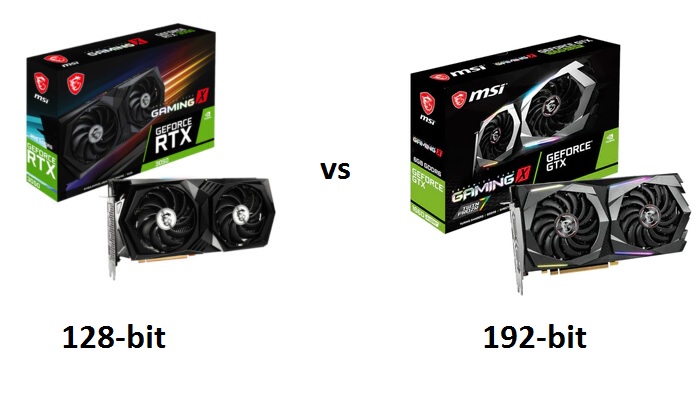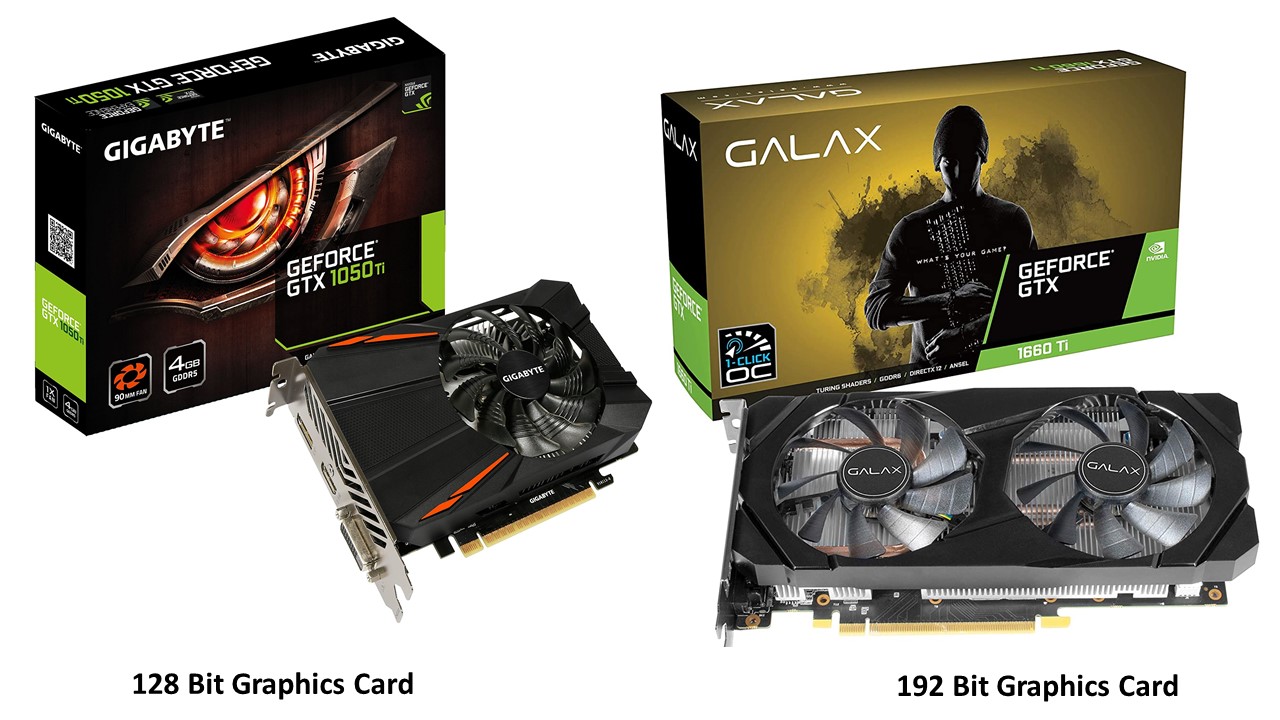Apart from the numbers, there are a few other differences between a 128 Bit and a 192 Bit GPU that are good to know.
If you do not know them, this article will not only help you in knowing them but will also let you know a few other things about these two types of graphics cards.
In This Article
KEY TAKEAWAYS
- The 128 bit graphics cards typically come with two lanes in them to transfer data but the 192 bit graphics cards may have an extra lane for the same purpose.
- The data flowing through the 128 bit graphics card is relatively low and slow when compared with a 192 bit graphics card.
- The 128 bit graphics card may cause some issues when it is used at a low memory setting which is unlikely to happen in a 192 bit graphics card.
The 3 Differences Between 128 Bit and 192 Bit GPU

1. Traffic Lanes
In terms of the number of lanes, usually there are two lanes in a 128 Bit graphics card.
On the other hand, a 192 Bit graphics card may come with an additional lane.
2. Data Flow
The data flow through the memory bus of a 128 Bit graphics card is comparatively low and slow in comparison to a 192 Bit graphics card due to the difference in the number of lanes present in them.
3. Vulnerability
The 128 Bit graphics card has a higher chance of getting crippled during operation if the memory is set at a low speed.
On the other hand, the performance level of the graphics card with a higher number of bits may not suffer due to the same reason.
Which is Better to Use – 128 Bit or 192 Bit GPU?

Ideally, this question seems to be irrelevant because, practically, the number of bits in a Graphics Processing Unit will not have any significant effect on its performance.
Well, at least, not all by it alone.
There are several factors to consider if you want to have a higher performance from a graphics card.
One of the most significant aspects is the video RAM and this is where the Bit aspect of the graphics card comes into play.
It actually refers to the video RAM or Random Access Memory and not the GPU.
This is one particular aspect that has an effect on the total memory bandwidth of the graphics card but in collusion with the clock speed measured in MHz.
For example, a 128 Bit graphics card with a clock speed of 500 MHz will have the same bandwidth as a 192 Bit graphics card which has a much lower clock speed.
However, this should not be the only deciding factor when you choose a graphics card if you really want to have a better performance overall.
Therefore, as it is in all other cases, you should consider the benchmarks or user reviews of the particular graphics card you want to buy and compare with other graphics cards with similar specifications.
Remember, what is promised by the manufacturers of the graphics cards in their ads or marketing campaigns may be drastically different when these are used in real-world gaming situations.
It certainly may not be as fast as it is supposed to be, and for that you cannot blame only the lower bit.
This is because the memory interface speed alone does not influence the performance of the graphics cards very much alone.
Ideally, the number of cores plays a significant role in the graphics performance of a computer.
For example, a graphics card with a lower number of bits but higher number of cores may be able to process much more data in every clock cycle in comparison to a graphics card with a higher number of bits but lower number of cores.
Therefore, the overall level of performance of the two graphics cards will be entirely different without conforming to the common misconception that a higher bit rate of a graphics card translates automatically to a higher level of performance.
This means that if the number of cores is higher, the performance will be much better no matter what.
It is not dependent on the wider memory bus of the graphics processing card alone because the memory can be overclocked than stock.
The manufacturers of the graphics cards, especially NVIDIA, have found ways to make the best use of the lower bandwidth of the graphics cards.
This does not reduce the performance of the graphics cards irrespective of their bit interface.
However, difference in performance and higher reliability comes at a price.
It is therefore suggested that you take a look at the benchmarks before you buy a graphics card and then determine whether or not you are willing to pay the premium price.
Therefore, with all these said you can very well guess that the newer graphics cards may not be slower in performance even if they come with a smaller memory bus.
In fact, there are actually a few 128 Bit graphics cards that are much faster in comparison to a 192 Bit graphics card, and even a 256 Bit graphics card for that matter.
And, this is actually due to the different memory clock speed.
In the end, it can be said that, to choose the right graphics card the most important thing to look for is the memory bandwidth of it, usually measured in GB/s, rather than the number of bits.
A higher memory bandwidth of a graphics card will be capable enough to manage a video memory of even 3 to 4 GB.
Therefore, to have a higher performance and return on your investment, invest some time on research to find the different components of the graphics card.
You should not rush your decision and make your choice based on the number of bits of the graphics card only.
Conclusion
Therefore, as you can see from this article, there is not much difference between a 128 Bit graphics card and a 192 Bit graphics card as such, both in their features and performance.
It is the architecture and other specs of the graphics card that you should focus on to choose the best one among them.